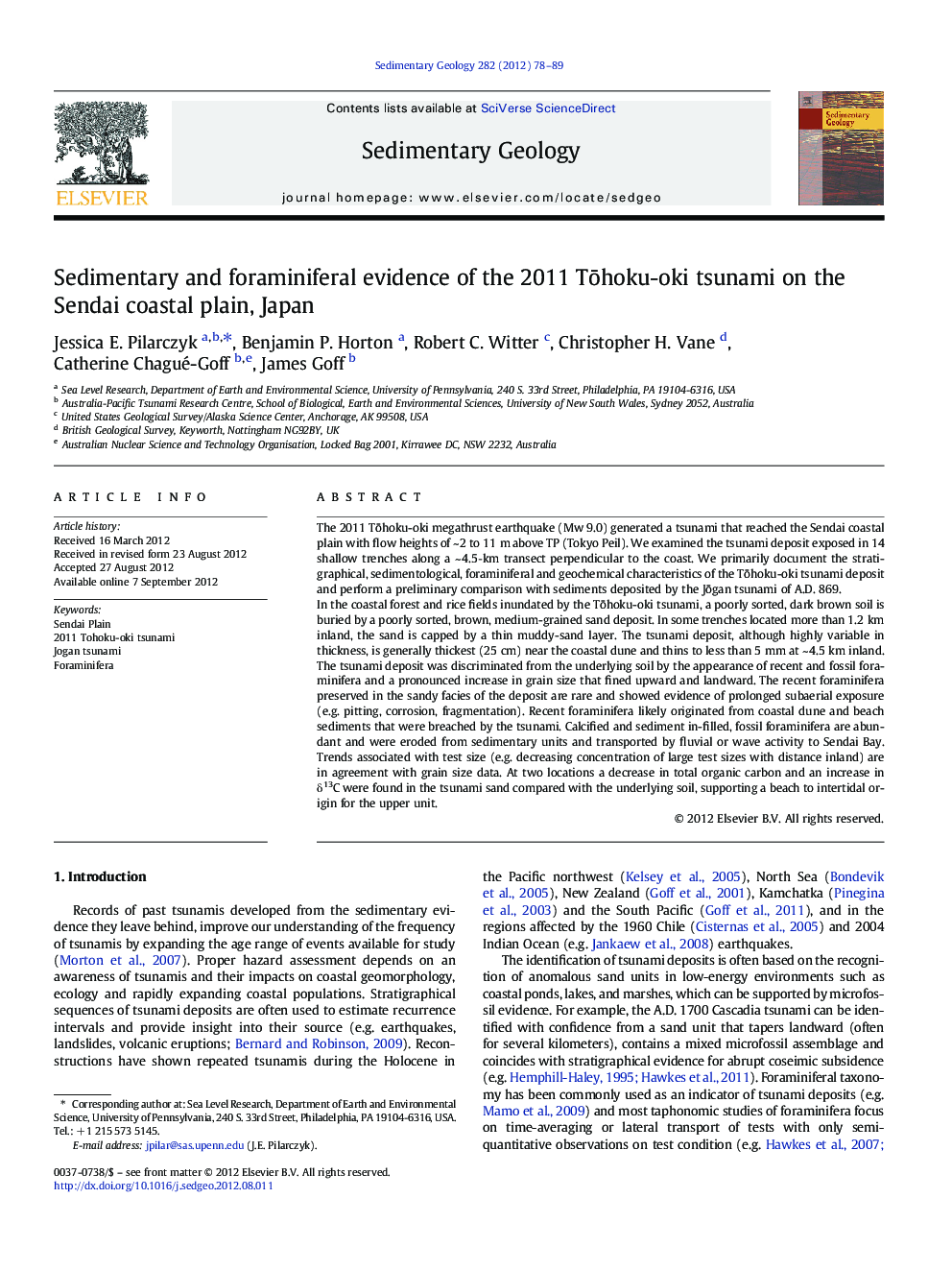| Article ID | Journal | Published Year | Pages | File Type |
|---|---|---|---|---|
| 4689620 | Sedimentary Geology | 2012 | 12 Pages |
Abstract
In the coastal forest and rice fields inundated by the TÅhoku-oki tsunami, a poorly sorted, dark brown soil is buried by a poorly sorted, brown, medium-grained sand deposit. In some trenches located more than 1.2 km inland, the sand is capped by a thin muddy-sand layer. The tsunami deposit, although highly variable in thickness, is generally thickest (25 cm) near the coastal dune and thins to less than 5 mm at ~ 4.5 km inland. The tsunami deposit was discriminated from the underlying soil by the appearance of recent and fossil foraminifera and a pronounced increase in grain size that fined upward and landward. The recent foraminifera preserved in the sandy facies of the deposit are rare and showed evidence of prolonged subaerial exposure (e.g. pitting, corrosion, fragmentation). Recent foraminifera likely originated from coastal dune and beach sediments that were breached by the tsunami. Calcified and sediment in-filled, fossil foraminifera are abundant and were eroded from sedimentary units and transported by fluvial or wave activity to Sendai Bay. Trends associated with test size (e.g. decreasing concentration of large test sizes with distance inland) are in agreement with grain size data. At two locations a decrease in total organic carbon and an increase in δ13C were found in the tsunami sand compared with the underlying soil, supporting a beach to intertidal origin for the upper unit.
Related Topics
Physical Sciences and Engineering
Earth and Planetary Sciences
Earth-Surface Processes
Authors
Jessica E. Pilarczyk, Benjamin P. Horton, Robert C. Witter, Christopher H. Vane, Catherine Chagué-Goff, James Goff,
